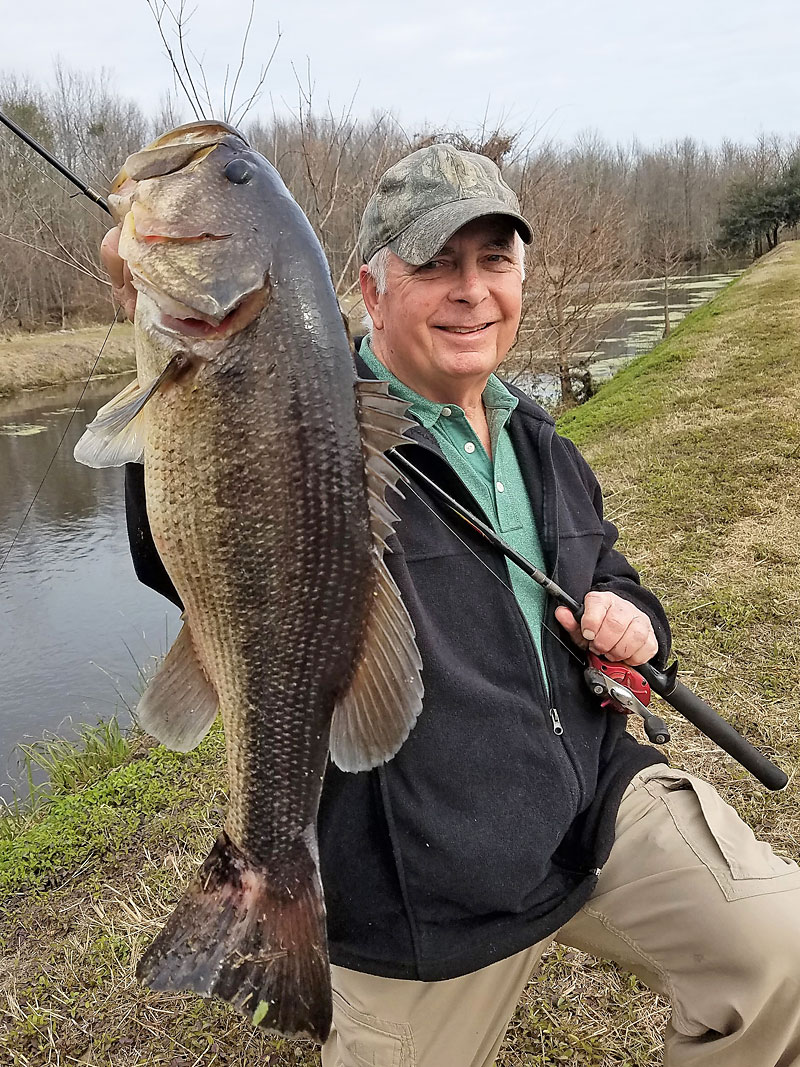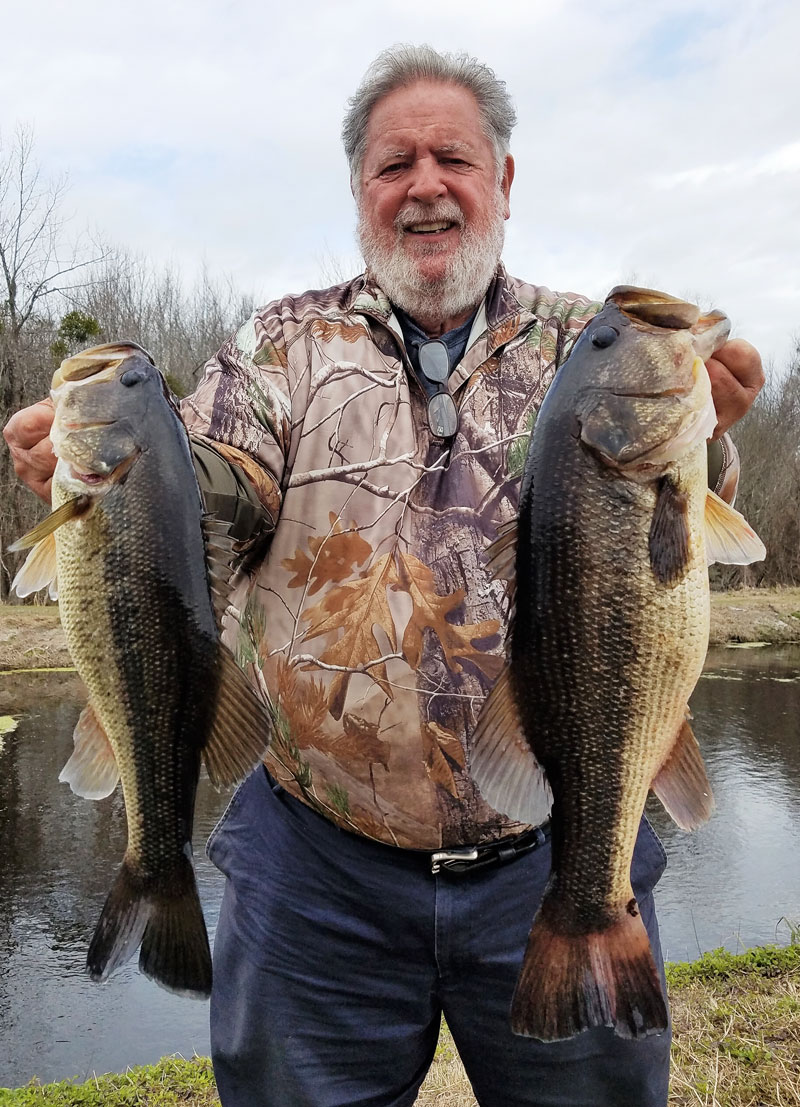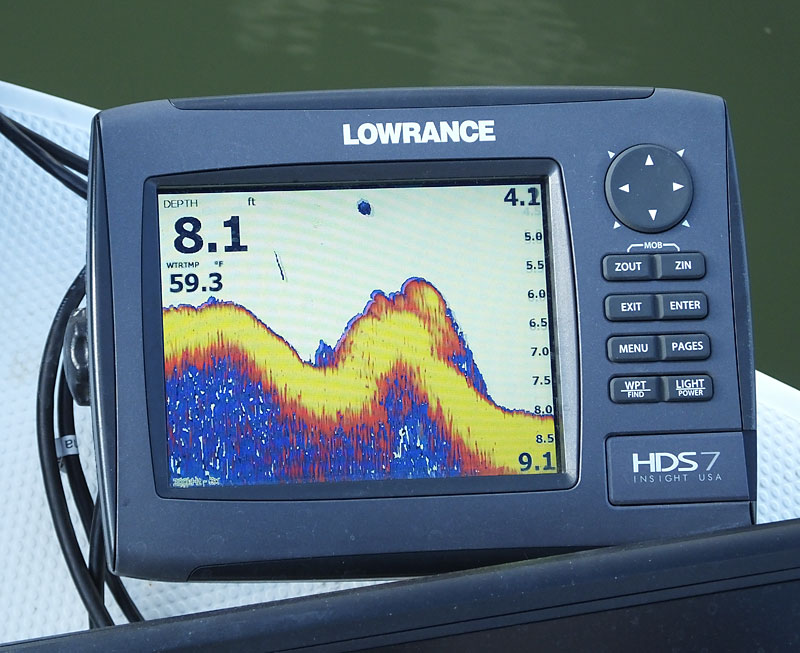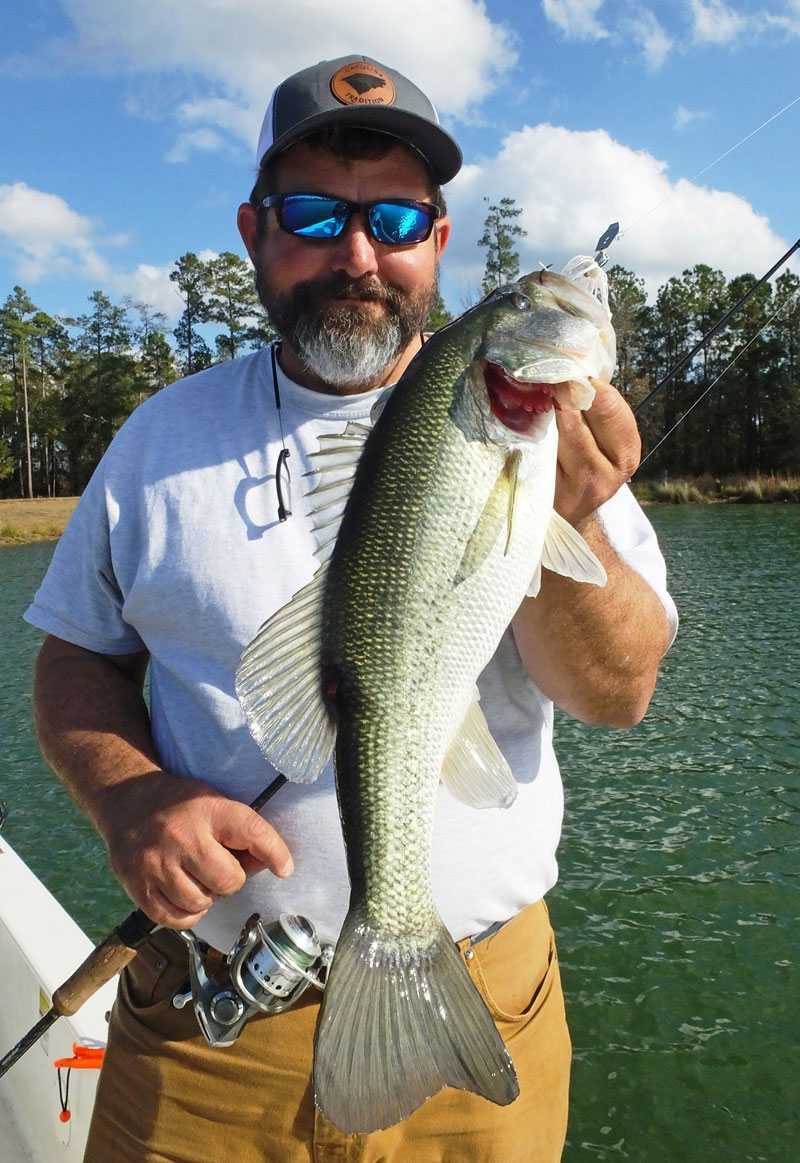 Pond fishing heats up fast this month
Pond fishing heats up fast this month
Spring brings renewed interest in bass fishing throughout the Carolinas. Lakes and rivers are excellent choices for early action. But pond fishing explodes in March. Huge bass, along with great action, exist across both states.
To be consistently successful, targeting bass in ponds is much more complex than simply walking the bank, casting bottom-bumping or topwater lures. That approach can be effective. But anglers can score bigger and more bass with a good pond-fishing game plan.
Chuck Porter, retired active duty and civilian employee from Shaw Air Force Base near Sumter, S.C., has developed a successful pond-fishing strategy in recent years. He formulates a strategic plan for every pond he fishes.
“Fishing ponds is relaxing and fun, “Porter said. “But I also like to catch lots of bass, especially big bass. I’ve learned that applying principles I’ve long employed on lakes has dramatically increased the number of bass — and big bass — caught. But sometimes, the top spots on ponds can be subtle and more difficult to distinguish.”
Porter learned that every pond, while unique in physical makeup, shares the tendency to repeatedly produce bass from specific spots.
Learning experience

“I typically fish from the shore, but it’s not random fishing,” he said. “I start learning everything I can from the first trip to a pond and add to my data base on subsequent trips. Every pond has unique features where bass tend to congregate. And some are obvious physical features such as heavy brush, visible stumps and heavy vegetative growth. But many of the top targets are very subtle, often only found by slowly working a bottom-bumping bait around the pond.”
Porter bumps the bottom with a plastic worm as he patiently patrols the bank. And while feeling for the “thump” of a bass, he’s tuned in to what he feels on the bottom. He distinguishes soft or weedy bottoms from firm bottom. He’ll “feel” for unseen stumps, logs and, best of all, depressions. All of these — and any feature unique to a specific pond — are potentially recurring bass hideouts.
Find deep water
“I also target, inflow or outflow drains, as well as areas with a steep slope,” he said. “One rule of thumb is the deepest water is usually near the pond dam. So that’s usually a prime area to fish. But if a deeper hole exists elsewhere, that’s a prime target on every trip.”
Anytime he catches a bass at a specific spot, he tries to identify why that fish was holding there.
“When I can answer that question, I use that information to help me find other similar spots, often with positive results,” he said.
Porter arms himself with at least a couple of rod-and-reel combos with different lures and/or sizes, enabling him to make long casts into the interior of the ponds.

“On several ponds I fish, some of my most productive spots are those well off the shoreline, found while searching for potential targets,” he said. “As I would on a lake, I’ll triangulate with reference points for finding those hidden targets. These are big bass magnets.”
Boats add options
Pond fishing is multi-layered. And shoreline fishing is but one layer that anglers should consider. Getting on the pond in a boat further enhances fishing opportunities.
Who better than a guide on the Santee Cooper lakes to put lake-fishing logic into pond-fishing success? Kevin Davis, a veteran guide, also fishes and guides for largemouth bass on ponds only a short distance from the big lakes.
“Pond fishing for bass has always been a love of mine. And although fishing from the shoreline is enjoyable, my preference is to fish from a boat,” Davis said. “Often, the very best spots are out of range for shoreline anglers, even those with elite casting ability. But a boat enables me to more effectively fish all sizes of ponds and take pond bass-fishing to another level.”
Davis has honed his pond-fishing skills since he was a youngster. And he has used much of the skills learned in ponds to become a better lake fisherman. He’s the co-owner of Pine Bluff Outdoorsman’s Club near Summerville, S.C. Pine Bluff consists of five ponds between 6 and 15 acres on prime Edisto River frontage.
Boats allow casts from different angles
“The diversity and size of the Pine Bluff ponds and proximity to Santee Cooper enables me to guide for bass and teach others how to most effectively fish ponds,” said Davis (843-312-3080). He said the most-productive water is often out of casting range on large ponds. Using a boat affords him the opportunity to fish the shoreline and any other targets he finds from multiple angles, just as he would on a lake.
“I’ll fish perpendicular to the shoreline when that’s the best. But when needed, I’ll work at a 45-degree or 30-degree angle,” he said.
Davis said this flexibility of positioning a boat enables him to work multiple lures, including crankbaits, spinnerbaits and topwaters, more effectively. In places where shoreline cover is heavy, he can approach in ultimate stealth mode, using only a sculling paddle. And he can fish weedy edge lines without having to cast over obstructions from the shoreline.
“Fishing via a boat simply offers more opportunities to find and catch bass on larger ponds,” he said. “Pond fishing is different than the big lakes in that the size of the water fished is scaled down. But the size of the bass is not downsized. Ponds produce prodigious bass, and while productive year-round, the early spring ranks high because ponds typically warm up faster than lakes. And trophy bass are active earlier.”
Learn a pond’s schedule

Davis said anglers with access to multiple ponds have an edge because the size, depths and water sources for different ponds impact how quickly they warm in the spring. With a little planning, anglers can time fishing trips on different ponds. So as one pond slows on big-fish potential, another may be approaching peak fishing.
“During the spring, weather conditions can change so quickly. Anglers can enjoy short but productive trips to a pond and fish around unsettled weather, but get to safety quickly when warranted,” he said.
Many lures are effective
Lures for pond fishing are as varied as for big-lake fishing. Porter typically prefers plastic worms and employs both lightweight, finesse rigs along with larger worms rigged with a 3/16-ounce bullet weight for longer casts. On most ponds, he finds opportunities for spinnerbaits and topwater lures as well.
Davis said he can more effectively fish crankbaits from a boat because he can cast to the shoreline and work the bait from shallow to deep water. He also improves his topwater options for shoreline cover and open-water targets. Changing how his boat is positioned enables him to effectively employ most traditional bass lures based on the individual situation.
“Fishing from a boat affords the ability to use specific lures to best work the specific fishing situations. And that usually improves the success rate,” he said. “One favorite example is skipping a lure deep into a brushy hole where big bass often hide. I typically can’t do that from the shoreline.”
Sonar for Big ponds
Fishing from a full-sized bass boat is not an option at every pond. But guide Kevin Davis has some ponds that will accommodate his big boat.
“Access is the biggest issue, but where I can, I’ll use my big boat, simply because, on big ponds, electronics are a key to success,” he said. “Boat size is not important on ponds. But using electronics, even inexpensive electronics on a small boat, is a game-changer in terms of finding and catching bass.

“I can learn more about the productive places in a pond using sonar units in a couple of hours than I could with multiple days of simply fishing with rod and reel,” he said.
Davis said many ponds have depressions, humps and even old creek beds or ditches submerged and hidden from view that are tremendous big bass-holding areas. These areas are easily identified with electronics. And they often hold clusters of bass, just as they do on big lakes. They’re typically not fished as much and offer the potential to hold more big bass.
“The larger the pond, the more likely the biggest bass are going to be further from the shoreline most of the time,” he said. “I often find bass shallow around mid-lake humps or weedbeds when fishing larger ponds. That’s true even when they’re not active around the shoreline shallows.
“But on other days, the opposite occurs, and electronics help me quickly find the sweet spots. Using electronics on a pond enables me to find fish, experiment and determine the productive pattern for that day much quicker. And we spend a lot more time catching bass than hunting for them.”





Be the first to comment